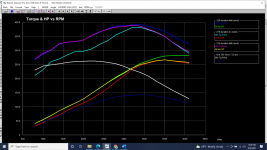I woke up the other day with an epiphany. What if a four cycle engine had valve timing that suited the upper rpm range but did not suffer lower rpm power losses from intake revision? In theory, if there were no intake revision we could see a 30% increase in idling torque that would taper off to meet up with the peak torque. I wanted to bounce this idea off others before I dug into it much further. Physically adapting reed valves would be a challenge but it think its totally possible. Keeping them alive might be a little harder...?
After some research I found The 81 Honda xr 500 had reed valves so they could use a larger cam but maintain low end mannerisms. Being that this was only in production for a year or two, maybe its not worth the efforts? With the 300 motor needing such large cam profiles to get any decent HP out of them, it seems like it would be the perfect candidate.
After some research I found The 81 Honda xr 500 had reed valves so they could use a larger cam but maintain low end mannerisms. Being that this was only in production for a year or two, maybe its not worth the efforts? With the 300 motor needing such large cam profiles to get any decent HP out of them, it seems like it would be the perfect candidate.

